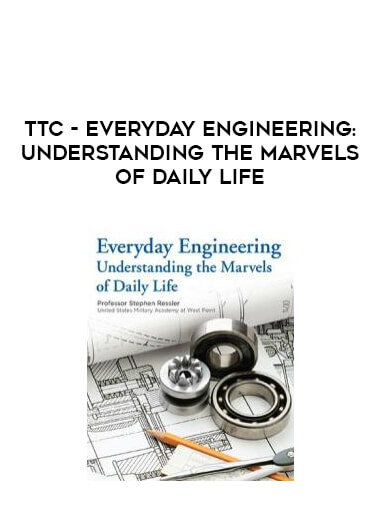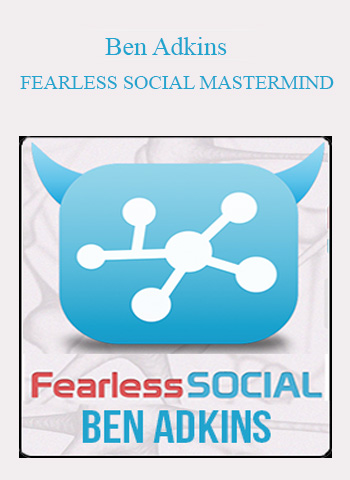TTC – Everyday Engineering: Understanding the Marvels of Daily Life

Arichive : TTC – Everyday Engineering: Understanding the Marvels of Daily Life
Look around you. Great masterpieces of engineering are everywhere. As soon as you get out of bed in the morning, you are putting centuries of scientific and mechanical ingenuity to use. So familiar are these structures, inventions, and services that they are all but invisible. Yet they are just as remarkable as great works such as the Parthenon, the Eiffel Tower, and the Panama Canal.
Consider for a moment the wonders of these marvels that have likely already played an important part in your day today:
- Residential construction: Built with common materials and simple tools, the modern house is a technological system for living. It provides protection and comfort, access to life’s necessities, and a flexible space for work and recreation.
- Telecommunications: Able to link you to any phone in the world, the traditional phone system is miraculous enough. Even more wondrous is the array of services available through new telecommunications technologies such as cellular networks.
- Transportation: You can get there from here, thanks to automotive engineering, petroleum drilling and refining, satellite navigation, and a road system that is fast, safe, and goes almost everywhere.
- Water and power: Your house would be dark and bleak without connections to infrastructure systems that supply fresh water, dispose of wastewater, and furnish a power source—electricity—that provides illumination and animates most of your household appliances.
All of us use these technologies, and knowing how they work empowers us in major ways. Anyone who owns a home or is in the market for one benefits enormously from understanding how it is constructed and how the roof, insulation, plumbing, wiring, heating, and cooling systems are integrated into the building. Anyone who’s buying a car or needs to get one fixed can rest easier knowing how spark plugs, transmissions, tires, and brakes do their jobs.
And because the development and use of everyday technologies—from solar cells to cell towers—are often strongly influenced by public policy, understanding everyday engineering helps us make more informed decisions about the kinds of policy initiatives we wish to support.
Plus, the achievements of everyday engineering are worth admiring for their own sake. They represent some of the most inspired thinking of our civilization, and by looking under the hood to see how these technologies operate, you learn about basic scientific principles that apply throughout the world.
For these reasons and more, Everyday Engineering: Understanding the Marvels of Daily Life is an indispensable guide to the way things work in the world around you. Conducting this eye-opening tour is Professor Stephen Ressler of the United States Military Academy at West Point, an award-winning civil engineer and a nationally honored leader in engineering education.
In 36 half-hour lectures, richly illustrated with instructive physical models, computer animations, and graphics designed by Professor Ressler himself, you start by learning how a house is put together with all its subsystems. Then you move outside to trace the origin and route of water, power, and telecommunications networks. Finally, you hit the road to discover how automobiles function and how roads and highway bridges are engineered.
Along the way, Everyday Engineering investigates power plants, dams, aqueducts, railroads, communication satellites, home energy efficiency, simple machines around the house, recycling, and many other topics. No background in science or engineering is needed to follow this riveting presentation, which gives you deep insight into the underlying simplicity of the complex systems that enhance our lives.
See Familiar Things with New Eyes
As an example of how Professor Ressler can turn everyday devices into a fascinating lesson in creative problem solving, he devotes an entire lecture to the faucet, showing how the problem of delivering hot and cold water into a sink has elicited a host of solutions—some practical, others not. We are all familiar with automatic faucets in public restrooms that defeat our initial attempts to get them to work, or two-handled faucets that lack clues about which way to turn the knobs. You’ll be surprised by the subtlety of the problem and the wide array of approaches, which is typical for issues of user-centered design.
Other intriguing insights you’ll get from the course include:
- The genius of building codes: Houses are such complex technological entities that you might think an engineer would be needed to design each one. But building codes effectively serve as a substitute for an engineer’s judgment, specifying construction methods at a high level of detail.
- Gone with the wind: Compared to traditional masonry and timber-framed dwellings, modern light wood frame houses are so light and sturdy that it’s possible to imagine one being lifted from its foundation by the wind and transported intact far away—as happened in the classic 1939 movie The Wizard of Oz!
- Save money and go green: Professor Ressler has plenty of advice for enhancing the energy efficiency of your home. People in the market for a new home should know about the latest trend in efficiency: the net-zero-energy house. Thanks to passive-solar design and in-home renewable energy sources, it requires no net input of energy over the course of a year.
- Talking torque: The key to understanding how power is transmitted from an engine to the wheels of a car is the concept of torque—the tendency of a force to cause rotation—which helps explain power, acceleration, speed, fuel economy, and why internal combustion vehicles require multiple gears.
A Field Guide to Everyday Technology
Professor Ressler notes that his approach to Everyday Engineering is inspired by a very familiar genre: “Many people, myself included, find great satisfaction in identifying stars in the night sky, in distinguishing a red-tailed hawk from a turkey vulture,” he says. “The technological world is certainly no less interesting, but lacks the guidebooks available to stargazers and birdwatchers. I hope this course will provide just such a resource by serving as a sort of field guide to everyday technology.”
With this outlook and the enlightening information in these lectures, you will be able to look at the world around you and decipher mysteries such as these:
- The unassuming utility pole: Next time you’re stuck in traffic, savor the complexity of the common utility pole, which typically has three high-voltage power distribution feeders, three insulators, and a neutral wire; and might also carry transformers, circuit breakers, low-voltage distribution lines, and telecommunications cables.
- Ballet of the bulldozers, scrapers, and dump trucks: Ever wonder why so many kinds of earthmoving machines are needed at a highway construction site? They’re following precisely choreographed instructions on a mass diagram, with each type of vehicle moving soil according to its optimum operating range.
- The power outage puzzle: Sometimes electrical power goes out and then seconds later returns. What’s usually happening is that a specialized circuit breaker, called a recloser, has tripped in response to a short circuit, such as a tree falling on a power line. The device automatically restores power if the fault has cleared.
- Mystery of the missing web page: Web pages can get stuck in the process of loading, while you stare at the spinning wait cursor on the screen. The problem is usually heavy Internet traffic, which exceeds the storage capacity of a router somewhere in the network. The overflow packets of information that comprise the web page are sometimes simply lost.
One of the pleasures of Everyday Engineering is the meticulous care that Dr. Ressler has taken in preparing over 150 working models that explain everything from an arch dam to the universal joint in a car’s drive shaft. He also delights in the unexpected: in the last lecture he switches gears by examining a famous case when technology failed during the Great Northeast Blackout of 2003. Triggered by high electrical demand during a sweltering summer day, a short circuit due to overgrown trees, and a software bug that disabled a control room alarm system, the cascading series of breakdowns produced the worst-ever electric power blackout in North America.
This incident serves as a graduation exercise for the course. Having explored the workings of the electrical power grid in previous lectures, you’ll find that you understand the crisis in perfect detail. Indeed, you’ll be ready to apply your broad understanding of everyday engineering to any technological issue that crosses your path in the future.































Reviews
There are no reviews yet.